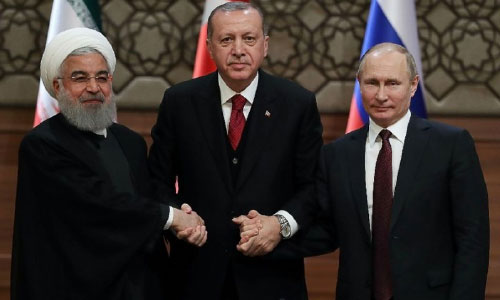BEIRUT - The Astana peace process, aimed at ending the Syrian conflict, was launched in January 2017 by Russia and Iran, allies of the Damascus regime, and rebel-backer Turkey.
The three presidents are due to meet in Iran on Friday, ahead of an expected government offensive on rebel-held Idlib province that could be the last major battle of the seven-year-old civil war.
The Astana process, launched after Russia’s intervention definitively tipped the military balance in the regime’s favour, led to the creation of four “de-escalation zones”.
The cessation of hostilities in those areas was short-lived, however, and the forces backing President Bashar al-Assad have already retaken three of them. Idlib is the last one.
The Astana process gradually eclipsed an earlier UN-sponsored negotiations framework known as the Geneva process, which had put more emphasis on political transition but failed to curb violence that has already killed more than 350,000 people. In late 2016, Russia, Iran and Turkey take over the Syrian peace process, sidelining the United States. They impose a ceasefire between the army and rebels.
In January 2017, they launch talks in Astana, bringing rebel and regime representatives to the capital of Kazakhstan, a Russian ally in central Asia.
At the January 23-24 talks, the three sponsors agree to bolster the fragile truce.
However, the final declaration is not signed by the rebels, led by Mohammad Alloush, or the regime, led by Bashar Jaafari, and negotiators do not hold face-to-face talks.
In February, Astana talks between regime and rebel delegations end without a major breakthrough. Several more rounds of talks are held but fail to yield significant results. (AFP)
Home » World » Syria: The Astana Peace Process
Syria: The Astana Peace Process

